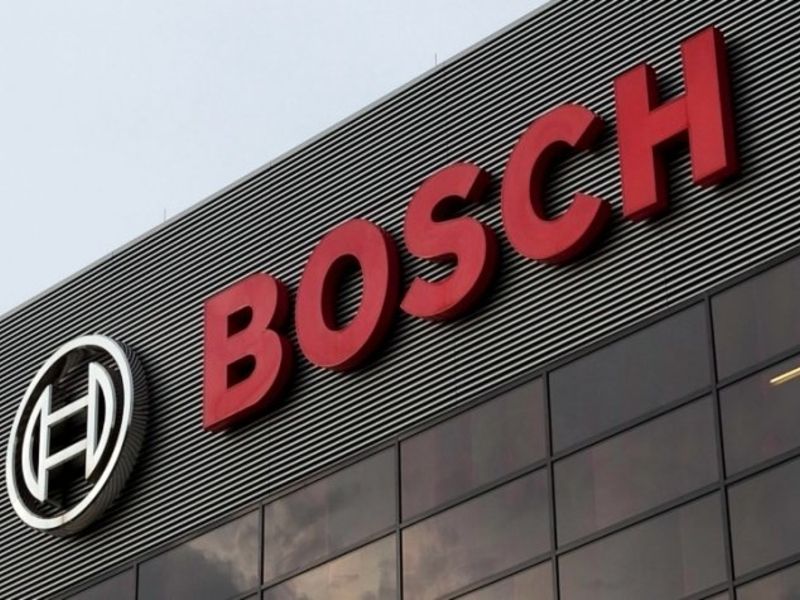
Robert Bosch is combining its automotive software and electronics activities into a new division in an effort to reduce complexity and speed up development and time to market.
The unit, Cross-Domain Computing Solutions, will have 17,000 employees, drawn from Bosch’s existing Multimedia, Powertrain Solutions, Chassis Systems Control and Automotive Electronics divisions. It will be operative at the start of next year.
Harald Kroeger, a member of Bosch’s management board who now oversees those divisions, among others, will be responsible for the new division, which will fall under Bosch’s Mobility Solutions business sector.
A typical new car now has 100 million lines of software code, Kroeger said in an interview with Automotive News Europe, because of the growing number of safety, performance and comfort features offered by automakers — and expected by buyers.
By comparison, he said, a computer operating system such as Microsoft Word has up to 50 million lines of code. And fully automated cars will have 200 million to 300 million lines, he said.
“Software content has become bigger and bigger, and what we’re doing now is creating a new center of gravity for software intensive products at Bosch,” he said.
Bosch has around 30,000 software engineers now, Kroeger said, and about 8,000 of them will be assigned to the new Cross-Domain Computing Solutions division. He said the impetus for the reorganization came from the bottom up rather than top down from Bosch’s management board, with leaders in software- and electronics-heavy divisions at Bosch hashing out the division’s structure and organization.
“This isn’t a project done by or for board members; this is driven by the experts of those groups,” he said.
“This is a huge step for us,” he said. “It’s a cultural change to put these things together. If you have separate domains, at some point you have certain territories, and we think that putting it all together will be so much better.”
Bosch expects the overall market for what it calls “software-intensive electronics systems” to grow by 15 percent annually in the next decade, or from about 20 billion euros ($23 billion) now to 80 billion euros by 2030. That figure includes software and hardware from relatively simple electronic control units and sensors to onboard computers with microprocessors.
The importance of vehicle software was highlighted recently by software problems with two critical Volkswagen models, the ID3 electric car and the eighth-generation Golf. The Volkswagen Group has shaken up its software leadership and organization, shifting responsibility to Audi to develop software for the group’s brands.
A recent McKinsey report said: “Today’s hardware-defined cars are rapidly transforming into software-defined transportation platforms. The latest automotive innovations, including intuitive infotainment, self-driving abilities, and electrification, depend less on mechanical ingenuity than on software quality, execution, and integration.”
“A typical new-generation vehicle likely has a software architecture composed of five or more domains, together comprising hundreds of functional components in the car and in the cloud,” McKinsey said, describing development costs as “daunting.”
Competitors in automotive software range from specialized startups to the world’s biggest suppliers such as Bosch and Continental, as well as automakers’ own in-house developers.
Kroeger said Bosch’s advantage is that it is present in every automotive software and electronics area, even having its own silicon production facilities.
“It will be easier for us to integrate all those parts, to offer the right interfaces, and that’s a big differentiator compared to competitors that always have a gap here or there,” he said.
Bosch offers a range of software and hardware products to automakers, Kroeger said, many of whom choose to work with other vendors on a project — for example, running one company’s software on another’s electronics. Bosch hopes to encourage more integration with the new unit, he said.
“It used to be ‘one software, one box,’ ” Kroeger said, meaning each function in a vehicle was separate, but as in-vehicle computers grow more powerful to handle complicated tasks such as parking assistance, Bosch and its customers are thinking of ways to combine functions on the same hardware.
“We’re seeing more and more customers asking us to bridge all those domains,” he said. For example, infotainment and parking systems software could run in parallel on the same in-car computer, reducing complexity.
“What’s new is the connection. In the past, every single domain was a world of its own. If you put it together you find that one plus one equals three.”
Robert Bosch ranks No. 1 on the Automotive News list of the top 100 global suppliers, with worldwide sales to automakers of $46.6 billion in 2019.